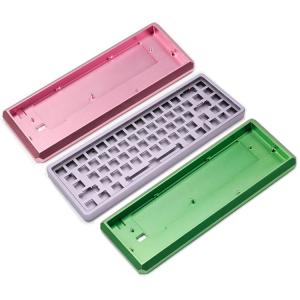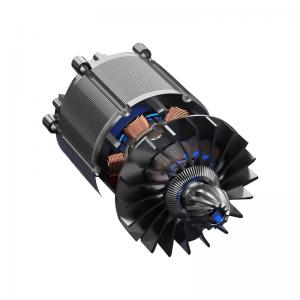Types of mechanical couplings and their uses
What are Mechanical Couplings
Mechanical coupling plays a crucial role in connecting two shafts that belong to distinct machines, such as the motor and wheel shafts. Essentially, it facilitates the linkage between the driving and driven shafts. There are instances where a shaft longer than 7 or 8 meters is needed.
In such cases, coupling two shafts together allows us to achieve the desired length while minimizing the impact of shocks. The primary purpose of coupling is to join dissimilar shafts, but it's important to note that different coupling types are required due to varying conditions.
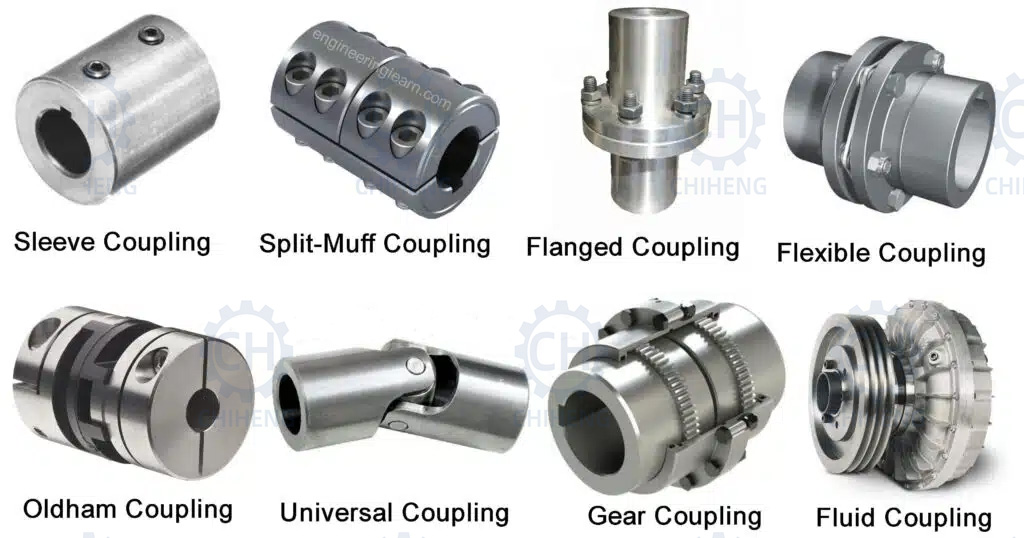
Materials and Durability of Couplers
When it comes to mechanical couplings, material selection is crucial for ensuring optimal performance and longevity. Two popular materials used in coupling construction are stainless steel and aluminum. Stainless steel couplings are known for their exceptional strength, corrosion resistance, and ability to withstand high temperatures.
These properties make them ideal for applications in harsh environments or where hygiene is a concern, such as in food processing or chemical industries. On the other hand, aluminum couplings offer a lightweight alternative without compromising on durability.
They are particularly beneficial in applications where weight reduction is critical, such as in aerospace or automotive industries. Aluminum couplings also provide excellent thermal conductivity, which can be advantageous in certain scenarios where heat dissipation is important.
Shaft Coupling Types and Applications
The world of mechanical couplings is diverse, with various types designed to meet specific needs. Among these, motor shaft couplings and general shaft couplings are widely used across industries. Motor shaft couplings are specifically engineered to connect a motor's output shaft to the driven equipment. They play a vital role in power transmission while accommodating slight misalignments and reducing vibration. These couplings come in various designs, including flexible disc couplings, jaw couplings, and elastomeric couplings, each offering unique benefits depending on the application requirements.
Shaft couplings, in a broader sense, encompass a wide range of coupling types used to connect any two shafts, not just those involving motors. They can be rigid or flexible, depending on the need for misalignment compensation. Rigid couplings provide a solid connection and are ideal for precisely aligned shafts, while flexible couplings can accommodate angular, parallel, or axial misalignments. The choice between different shaft coupling types depends on factors such as torque requirements, speed, environmental conditions, and the degree of misalignment expected in the system.
The Importance of Shaft Coupling:
This broad category encompasses various designs intended for different mechanical setups. Shaft couplings can be classified into rigid and flexible types, each serving unique purposes. Rigid couplings provide a solid connection without any flexibility, ideal for perfectly aligned shafts. In contrast, flexible shaft couplings allow for some degree of misalignment, absorbing shocks and vibrations that could otherwise damage connected machinery.
- #Connecting two different machines.
-
- #Transmitting power from the drive shaft to the driven shaft.
- #Reducing the impact of shocks on the equipment.
-
- #Eliminating overload problems in equipment.
Types of Mechanical Coupling:
1. Sleeve or Muff Coupling:
This is the simplest type of coupling, comprising a hollow cylindrical part called a muff or sleeve. The muff's diameter is manufactured to match the shaft's diameter. The driver and driven shafts are fitted on either side of the sleeve, secured in place by threaded holes and bolts to prevent longitudinal motion. A key and keyway arrangement ensures a slip-free connection between the muff and the shaft. This type of coupling is suitable for transmitting low to medium torque. All components must be adequately strong for proper functioning.
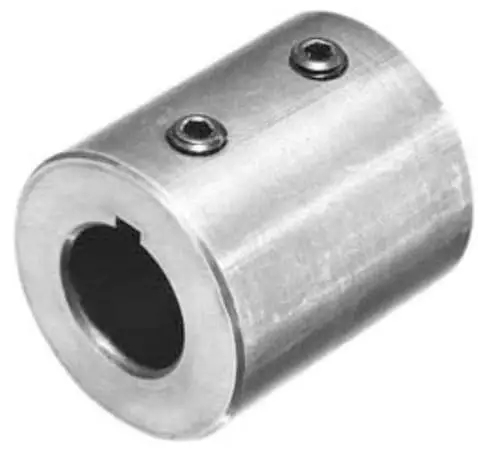
Advantages:
- Cost-effective compared to other couplings.
- Simple construction.
- Consists of only two parts: the sleeve and key.
- Disadvantages:
Unsuitable for misaligned shafts.
- Difficult to assemble and dismantle.
- Limited ability to absorb shocks and vibrations due to its rigid design.
2. Split-Muff Coupling:
In this type of coupling, the muff or sleeve is not a single piece but rather made up of two semi-cylindrical parts constructed from cast iron. One part is fitted from above the shaft, while the other is fitted from below. These two parts are joined together using bolts or studs, with two, four, or six holes provided to secure the muff.
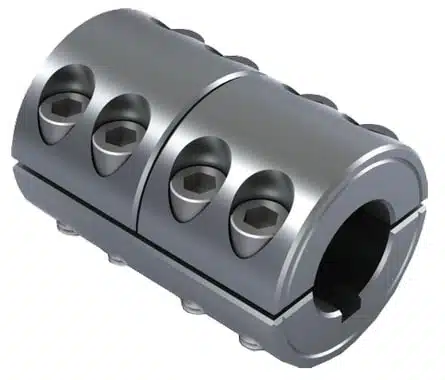
Advantages:
- The main advantage is the ability to assemble and dismantle without changing the shaft position.
3. Flange Coupling:
In flange shaft couplings, two flanges are brought together and fitted. Both flanges feature the same number of threaded holes, which are used to fasten them using nuts and bolts. A gasket is employed to prevent leakage. Flange couplings find widespread use and are suitable for medium to heavy-duty applications. To ensure a secure connection with no slippage, a tapered key is utilized.

4. Flexible Coupling:
Similar to flange couplings, flexible shaft coupling incorporates rubber bushings along with nuts and bolts. The rubber bushing, designed with appropriately sized holes, provides enhanced strength to absorb shocks and vibrations more effectively than flange couplings. Additionally, it accommodates slight misalignments between the shafts. Flexible couplings are commonly employed in medium-duty applications.
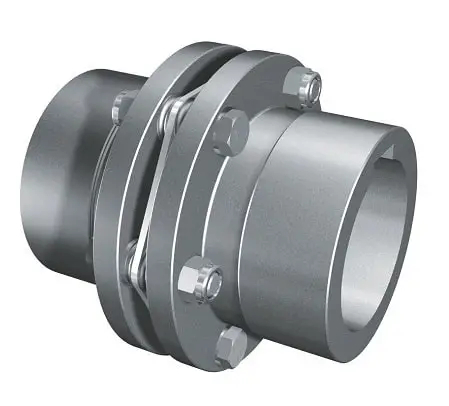
Among the various types of flexible couplings, flexible motor couplings, rubber shaft couplings, and flexible shaft couplings stand out due to their unique properties and applications:
- Flexible Motor Couplings: These couplings are specifically designed to connect motor shafts to driven machinery. They allow for both angular and parallel misalignment, ensuring smooth operation and reducing the risk of damage due to misalignment. Flexible motor couplings often feature high-torque capacities and are used in applications where precision is critical.
- Flexible Shaft Couplings: These versatile components can handle various types of misalignment, including angular, parallel, and axial movements. They are crucial in applications where perfect alignment is challenging to achieve. Flexible shaft couplings can be made from various materials, including elastomers and metals, providing options for different torque requirements and environmental conditions.
- Rubber Shaft Couplings: Utilizing rubber as the primary damping material, these couplings excel in shock absorption and vibration dampening. The inherent flexibility of rubber allows these couplings to accommodate significant misalignments while providing a reliable connection between shafts. Rubber shaft couplings are particularly useful in environments with high levels of vibration or where noise reduction is a priority.
5. Oldham Coupling:
Oldham couplings consist of two flanges connected by a middle plate. They are used when two shafts are misaligned and have a gap between them. The middle plate is joined to the flanges through a tongue and groove arrangement, with the grooves positioned perpendicular to each other. The key advantage of Oldham couplings is their ability to accommodate high parallel misalignment.

6. Universal Coupling:
Universal couplings are employed when two shafts are at an angle. Although the angle may remain constant, it can change during operation. The primary application of universal couplings is in heavy vehicles

7. Gear Coupling:
Gear coupling is a specific type of coupling that falls under the category of flange couplings. It differs from standard flange couplings as it comprises separate parts, namely the flange and the hub. It finds application in heavy-duty scenarios where robustness is essential. Two shafts are connected through fixed holes and secured by a third spindle. Gear couplings are particularly suitable when there is an angular displacement of 4 to 5 degrees in the shafts. Generally, they have a 1:1 gear ratio between the internal and external gears.
When exploring types of gear couplings, one encounters variations such as continuous sleeve, flange sleeve, and spindle couplings. Each type offers unique advantages, with continuous sleeve designs providing excellent torque transmission, flange sleeve types allowing for easy installation and maintenance, and spindle couplings offering enhanced flexibility for misalignment compensation. These variations cater to diverse industrial needs, from heavy machinery to precision equipment, highlighting the versatility of gear couplings in power transmission applications.
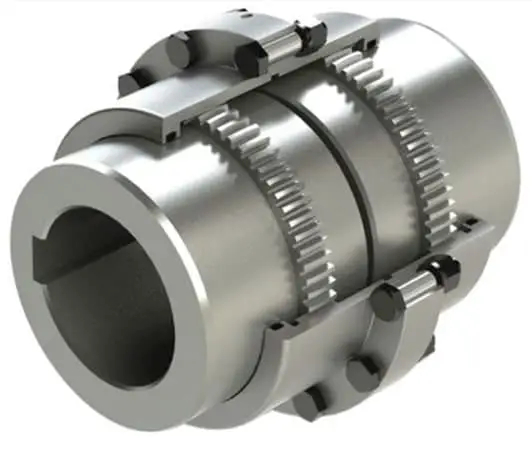
8. Fluid Coupling:
Fluid coupling involves connecting one shaft to the power supply and the other to the power generator shaft. It consists of a pump connected to one shaft and a turbine connected to the second shaft. Over time, the speed of the pump impeller and the turbine equalize, resulting in power transmission.
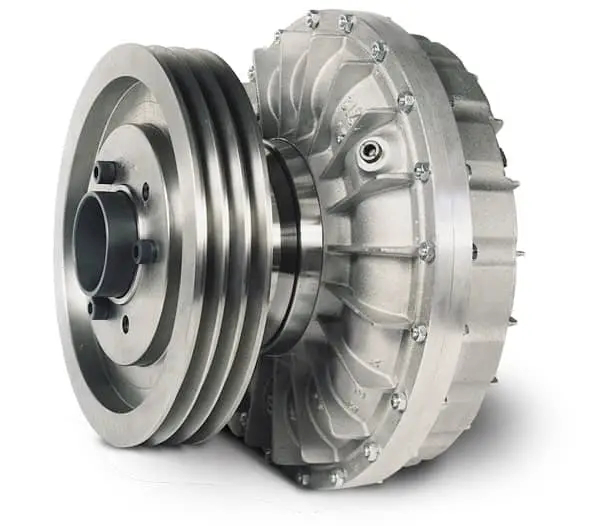
Applications:
- Utilized in marine propulsion systems.
- Widely employed in various industries for efficient power transmission.
Choosing the Right Coupling
Selecting the appropriate type of coupling is vital for optimizing performance and ensuring reliability in mechanical systems. Factors such as load requirements, environmental conditions, and alignment capabilities must be considered when choosing between stainless steel, aluminum, motor shaft, or other shaft couplings. Using the right coupling not only enhances the efficiency of power transmission but also extends the lifespan of machinery by minimizing wear and tear caused by misalignment or excessive vibrations. In summary, understanding the various types of mechanical couplings available allows engineers and technicians to make informed decisions that lead to improved operational efficiency and reduced maintenance costs across diverse industries.
![Aluminum 6061 vs 6063: Key Differences in CNC Aluminum Machining [2024 Guide] Aluminum 6061 vs 6063: Key Differences in CNC Aluminum Machining [2024 Guide]](/Uploads/news/677e3a8d147f1.jpg)

